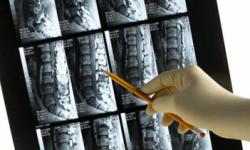1: Low Bone Density
As many as eight million American women have osteoporosis, and almost 22 million have low bone density, putting them at risk for developing the disease. Half of all women over age 50 will have an osteoporosis-related fracture in the years ahead. Significant risk has been reported in people of all ethnic backgrounds.
2: Bone Health
Three out of four women have not discussed bone health with their health care professional or been screened for osteoporosis. Seventy-one percent of women with osteoporosis don’t even know they have it, and 86 percent with the disease are not being treated. Make an appointment today to discuss your personal health risks for osteoporosis.
3: Smoking
Smoking, abusing alcohol and excessive thinness increase your risk for developing osteoporosis. Likewise, if you don’t exercise, or if you exercise too much, your risk for developing osteoporosis increases.
4: The Importance of Calcium
Bones that are calcium rich are less likely to break. Be sure your diet provides at least 1,000 to 1,200 mg of calcium daily to help keep your bones strong. Drinking or eating three dairy products a day provides the recommended daily intake of calcium, but most women fall short of this requirement.
5: Menopause
Menopause increases your risk for developing osteoporosis because your body’s natural production of the hormone estrogen declines. Estrogen helps keep bones strong. However, new studies have shown that postmenopausal hormone therapy, available as a combination of estrogen and progestin (a synthetic form of the hormone progesterone) or estrogen therapy alone, poses serious health risks. While these same studies also showed conclusively that postmenopausal hormone therapy helps prevent fracture risk, researchers concluded that this benefit outweighed the increased risk for breast cancer, heart attack, stroke and blood clots.
In January 2003, the U.S. Food and Drug Administration (FDA) announced that it would require a new, highlighted and boxed warning on all estrogen products for use by postmenopausal women. The so-called “black box” is the strongest step the FDA can take to warn consumers of potential risks from a medication.
The “black-box” warning also advises health care professionals to prescribe estrogen products at the lowest dose and for the shortest possible length of time. Women taking estrogen products are cautioned to have yearly breast exams, perform monthly breast self-exams and receive periodic mammograms.
New, lower-dose versions of the hormone therapies used to treat symptoms of menopause are currently being developed. The FDA recently approved a low-dose version of the combination estrogen-progestin treatment sold as Prempro, which is expected to be available in the summer of 2003.
6: Types of Medications
Several types of medications, including calcitonin (Miacalcin), raloxifene (Evista) and bisphosphonates (Actonel, Fosomax), are effective in preventing and treating osteoporosis. A side effect of Raloxifene is that it may temporarily worsen hot flashes; bisphosphonates can cause stomach upset. Teriparatide (Forteo), a new drug approved by the FDA in 2002, is the first medication that actually stimulates bone formation instead of slowing the breakdown of bone.
7: Bone Mass
Without treatment, women lose the most bone mass — as much as 25 percent to 30 percent — in the first five to seven years following menopause. Because of declining estrogen levels after menopause, a woman’s ability to naturally maintain bone structure is seriously depleted. However, not everyone needs to seek treatment. Bone density testing helps target those at greatest risk.
8: Bone Density Test
A bone density test measures the strength of your bones to determine your risk of developing osteoporosis. This test is not usually performed until after menopause, unless you have an unusual clinical situation or are at high risk for osteoporosis. It is quick, painless and non-invasive. Medicare and many commercial insurers pay for testing for individuals at risk and those with osteoporosis.
9: Bone-loss
Bone-loss rates can be slowed by regular weight-bearing and muscle-strengthening exercises. Activities such as walking, gardening, jogging, and playing tennis help to strengthen bones and connective tissue.
10 Osteoporosis Facts to Know
There is no cure for osteoporosis. However, it is preventable and treatable. You can help prevent bone loss and fractures from osteoporosis with proper diet, exercise and medications, when necessary.
Copyright 2003 National Women’s Health Resource Center Inc. (NWHRC)
